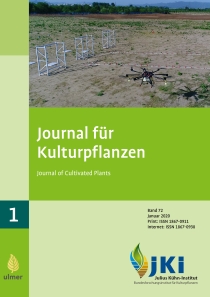The influence of Unmanned Agricultural Aircraft System design on spray drift
DOI:
https://doi.org/10.5073/JfK.2020.01.01Keywords:
Unmanned Agricultural Aircraft System, spray drift, drift sediment, airborne driftAbstract
Field experiments were conducted to determine the influence of the Unmanned Agricultural Aircraft Systems (UAAS) design on spray drift sediment during a common arable field application in consideration of the spray deposit distribution. In addition, airborne drift collectors were used to determine the initial drift potential as a possible alternative for characterising the spray drift.
Four models of UAAS representing three different designs, one single rotor, one 6-rotor and two 8-rotor designs, were involved in the study. All UAASs where equipped with individual spraying systems but the same nozzles were used: Lechler TR 80–0067 and Lechler IDK 120–015, providing nominal application rates of 40 l ha–1 and 75 l ha–1, respectively.
There was no influence of the UAAS design or the nozzle type on the spray distribution quality on the treated area. In general, the coefficient of spray deposit variation was 40% to 50%.
The results of the study show that the effect of the UAAS design on spray drift was relatively low compared to the influence of the type of nozzles used. As for other application techniques, the conventional hollow cone nozzle TR 80–0067 produced much more spray drift compared to the air induction flat fan nozzle IDK 120–015. With both types of nozzles, the ground sediment of spray drift was much higher than the standard drift values used by German authorities for drift risk assessments for boom sprayers in arable crops.
A good correlation was found between drift sediment and airborne drift potential. As the latter seems to be a suitable alternative, at least for comparing different spraying systems, further studies should be conducted also for other application techniques.








